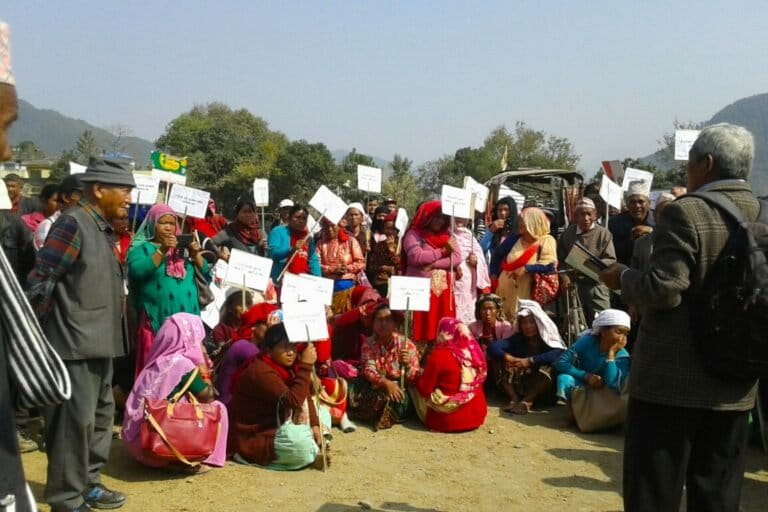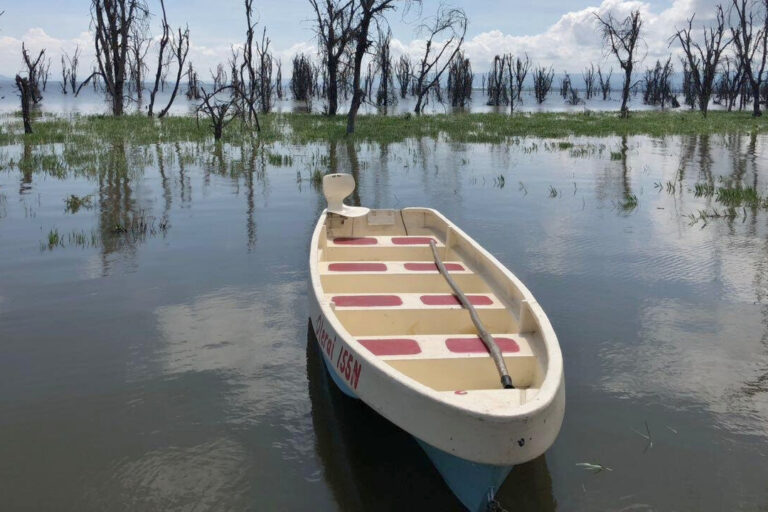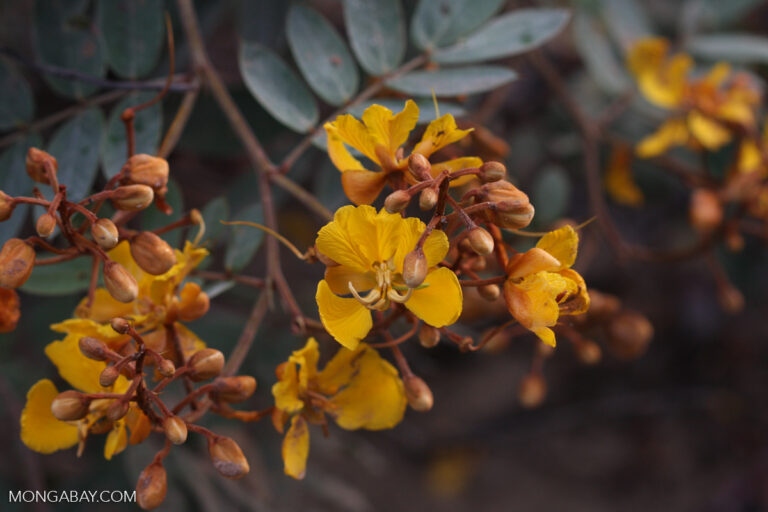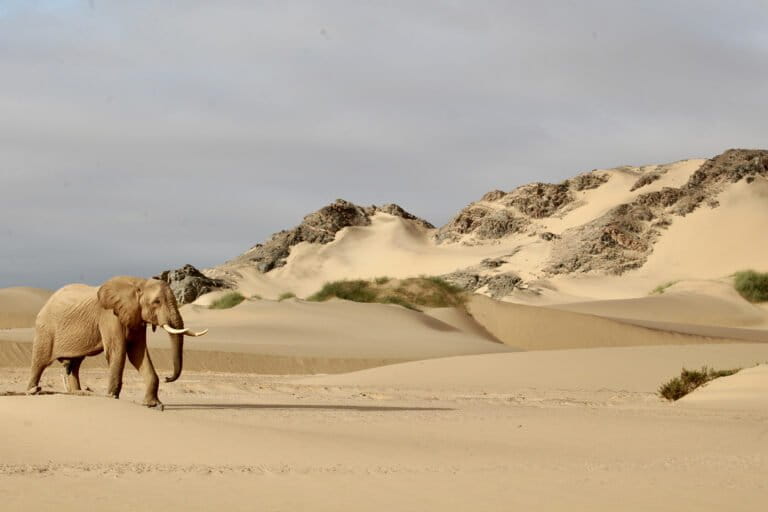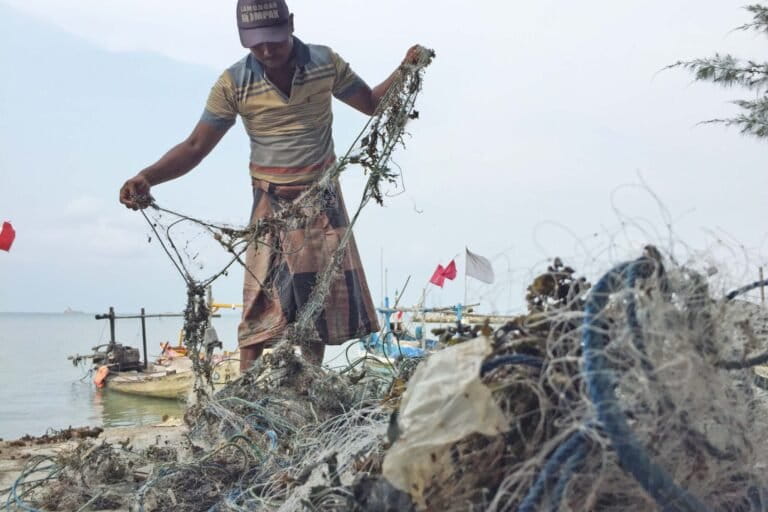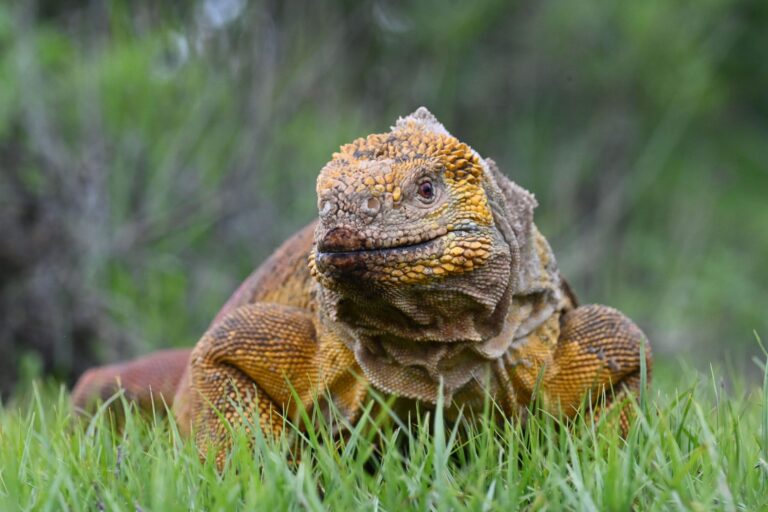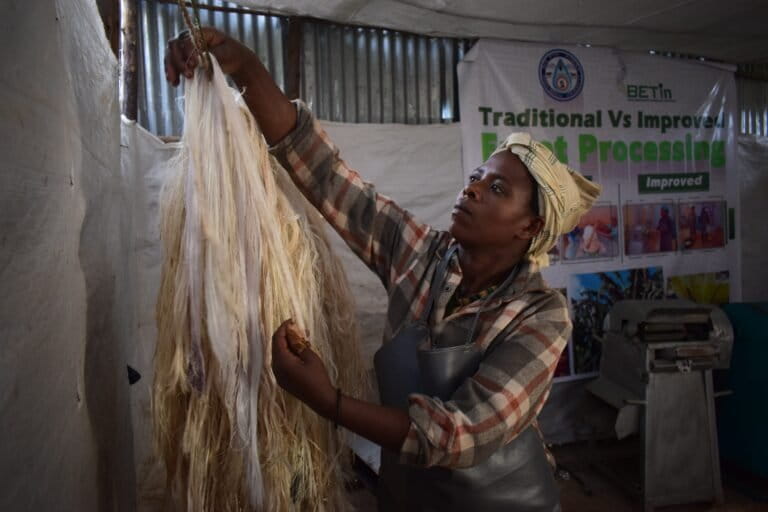- In December, Greenpeace and the Socio-Environmental Institute (ISA) discovered a 150-kilometer- (93-mile-) long illegal road, as well as four hydraulic excavators in the Yanomami Territory, in Brazil’s northern Amazon region.
- While small-scale illegal miners have been active in the area for the past 50 years, the road and the use of heavy machinery could make mining activities 10-15 times more destructive.
- Currently, about 20,000 illegal miners operate across the Yanomami Territory, causing violence, health issues and child malnutrition for the region’s 27,000 Yanomami inhabitants.
- Newly elected President Lula has issued several decrees to protect Indigenous lands and the environment, most recently declaring a state of emergency in the Yanomami Territory.
On Dec. 5, a flight over the Yanomami Indigenous Territory in Brazil’s northern Amazon showed the Greenpeace and Brazilian NGO Socio-Environmental Institute (ISA) members on board an illegal road, already 150 kilometers (93 miles) long, and four hydraulic excavators nearby.
“The road is the road to chaos. It will turn the Yanomami Indigenous land into a complete hell,” said Danicley de Aguiar, Greenpeace Brazil’s Amazon forest campaigner, who was on the flight.
De Aguiar said the road was built by illegal gold miners, known as garimpeiros, and while they have been active in the area for the past 50 years, the road’s presence in an Indigenous reserve where there shouldn’t be roads means the miners will now have much easier access to the area. Additionally, their use of heavy machinery like hydraulic excavators now means their destructive potential increases by 10-15 times.

“It’s definitely [happening] with a speed that has never been seen before, which suggests that whoever built it has plenty of money, plenty of capital to invest in this activity,” said de Aguiar. “An excavator like this in Brazil … can cost an average of $700,000 reais ($136,000).”
He told Mongabay that while the illegal mining activities are usually run by people with few opportunities, as well as by politicians and people with a lot of capital, what has made the situation more complicated is the presence of organized crime and narco-trafficking groups operating in a border region that has few controls and is difficult to police.
The situation was also made worse as former President Jair Bolsonaro and the governor of Roraima state — where the Yanomami Territory is based — have promoted mining on Indigenous lands even though Brazil’s Constitution prohibits it. Additionally, when Bolsonaro came to office in 2019, he cut funding to federal agencies responsible for environmental protection and for Indigenous affairs, which also seems to have dissuaded the Brazilian military and police from intervening in the invasion of roughly 20,000 illegal miners in the Yanomami land.
Impacts on Yanomami communities
Although Brazil’s Constitution bans mining in Indigenous territories, between 2010 and 2020, illegal mining increased by 495% in these territories, while the Bolsonaro government also tried to legalize mining in these territories.

The Yanomami reserve is one of the three worst-affected Indigenous territories in the country, with an estimated 20,000 illegal miners operating there. In April 2022, the Hutukara Yanomami Association published an investigation describing how illegal mining in the Yanomami reserve had nearly tripled over the past three years, destroying more than 3,272 hectares (8,085 acres) as of December 2021.
According to the report, 15,000 of the reserve’s 27,000 Yanomami inhabitants have been directly impacted by the illegal mining. Communities within 10 km (6 mi) of the illegal mining sites have been affected by rampant sexual violence, rape, murder, organized crime, malaria and child malnutrition, while Indigenous youth have been lured into mining.
In December 2022, a report from Agência Pública revealed the extent of the health crisis in the Yanomami Territory driven by illegal gold miners, as data showed that Yanomami children have been dying from malnutrition at a rate 191 times greater than Brazil’s average.
“It’s a tragedy,” said Junior Hekurari Yanomami, head of the Yanomami and Ye’kuana Indigenous District Health Council (Condisi-YY). “Former President Bolsonaro didn’t prioritize the Yanomami people … rather, he encouraged gold miners to enter Indigenous areas,” he told Mongabay.
Greenpeace claimed the illegal road would worsen the situation since, previously, illegal miners could only enter the reserve by plane or boat. The NGO said the road also threatened the isolated Moxihatëtëa people, whose village is 15 km from the road.
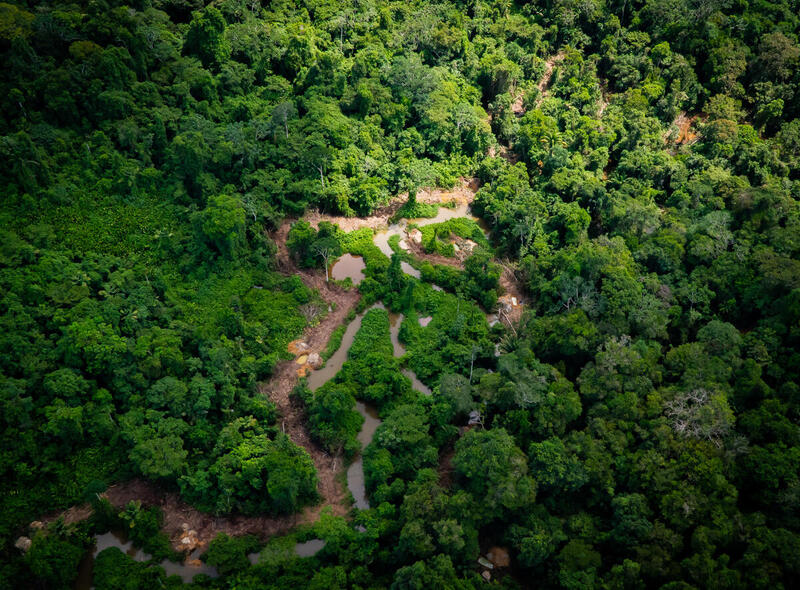
“We have done everything, everything to show [what is happening] — shouting, asking for help, pleading everywhere,” said Hekurari. “We are waiting for the government. … We hope the government will issue decrees as soon as possible.”
New hope with a new government
On his first day in office, President Luiz Inácio Lula da Silva issued a decree canceling Bolsonaro’s legal proposal allowing mining in Indigenous territories and issued five other decrees to revoke or alter his predecessor’s anti-environment and anti-Indigenous measures.
Lula’s inauguration speech Jan. 1 also specifically acknowledged that Indigenous peoples need to have their lands clearly defined and free from the threats of illegal and predatory economic activities. Indigenous communities are not obstacles, Lula said, “they are guardians of our rivers and forests and a fundamental part of our greatness as a nation.”.
Environmentalists and Indigenous activists have celebrated this shift of vision, including Lula’s creation of a Ministry of Indigenous Peoples, and on Jan. 20, the Brazilian government’s declaration of a state of emergency in the Yanomami Territory. This included a decree that establishes a National Coordination Committee for Combating the Health Care Crisis and provides for the creation of actions to address the health crisis in the Yanomami Territory and the social and health problems resulting from it.
On Jan. 21, Lula was in Boa Vista, the capital of Roraima, to visit an Indigenous hospital and the Indigenous Health Support House. He was joined by Sonia Guajajara, the minister of Indigenous peoples who is leading the emergency intervention in the Yanomami Territory, as well the presidents of the National Foundation of Indigenous Peoples (Funai) and the Special Secretariat for Indigenous Health (SESAI), the ministers of health, justice, planning and budget and social development.
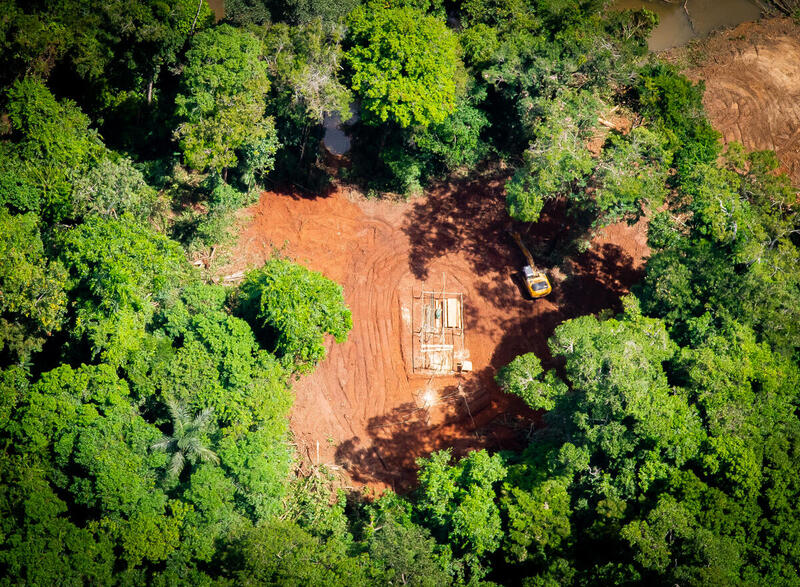
“We are going to take this story of ending any illegal mining very seriously,” said Lula in a press conference in Boa Vista. “We are going to take care that they [Indigenous peoples] are treated as first-class human beings, not as fourth- or fifth-class people. It is inhuman, what I have seen here.”
Mongabay reached out for comment to IBAMA, Brazil’s federal agency for environmental protection, the Ministry of Indigenous Peoples, and the state police in Roraima but received no feedback with regard to the Yanomami situation at the time of publication.
De Aguiar told Mongabay that the first thing the government needs to do is expel all the miners from within the Yanomami Territory, including by using the army and air force, similarly to when the Yanomami reserve was established 30 years ago.
Afterward, he said, the government would need to create protection policies and permanent bases across the territory to control who goes into the Yanomami Territory, as well as build an intelligence strategy so the Federal Police can identify and hold accountable those people who are financing the illegal mining.

But De Aguiar said the government also needed to go beyond command-and-control activities and look at robust social, scientific and technological policies that can be part of a new economic vision for the Amazonian territories.
“It’s a fairly complex task, because we’re talking about a society that has been created for a little more than 500 years and that was built within a predatory logic,” said de Aguiar. “[Yet] we consumed 90% of the Atlantic forest … and this predatory logic did not prove itself, it did not show it can produce development.”
De Aguilar said that today there are more than 30 million people starving in a country of 200 million people, and many poor people are attracted to deforestation and illegal mining because the country does not produce many quality jobs, which often makes these activities the only chance to earn a better livelihood.
“The hand that holds the chainsaw, the hand that operates the hydraulic excavator, is the hand of a poor person,” said de Aguilar. “Overcoming illegal mining in the Amazon requires overcoming poverty.”
Banner image: Image by Valentina Ricardo for Greenpeace.
Yanomami health disaster prompts outrage as Lula vows to tackle crisis
Brazil’s illegal gold rush is fueling corruption, violent crime and deforestation
FEEDBACK: Use this form to send a message to the author of this post. If you want to post a public comment, you can do that at the bottom of the page.







